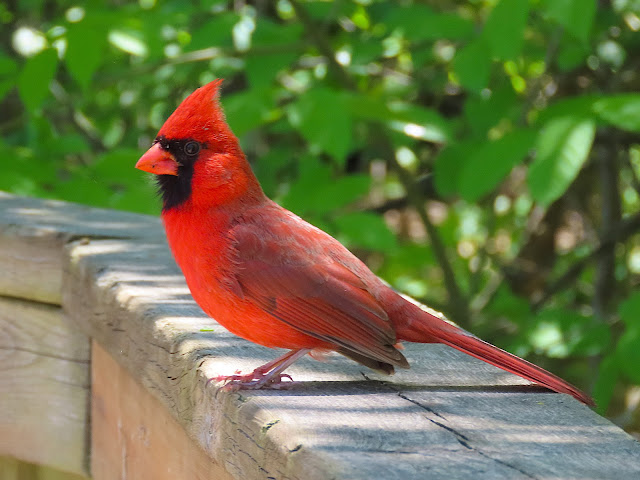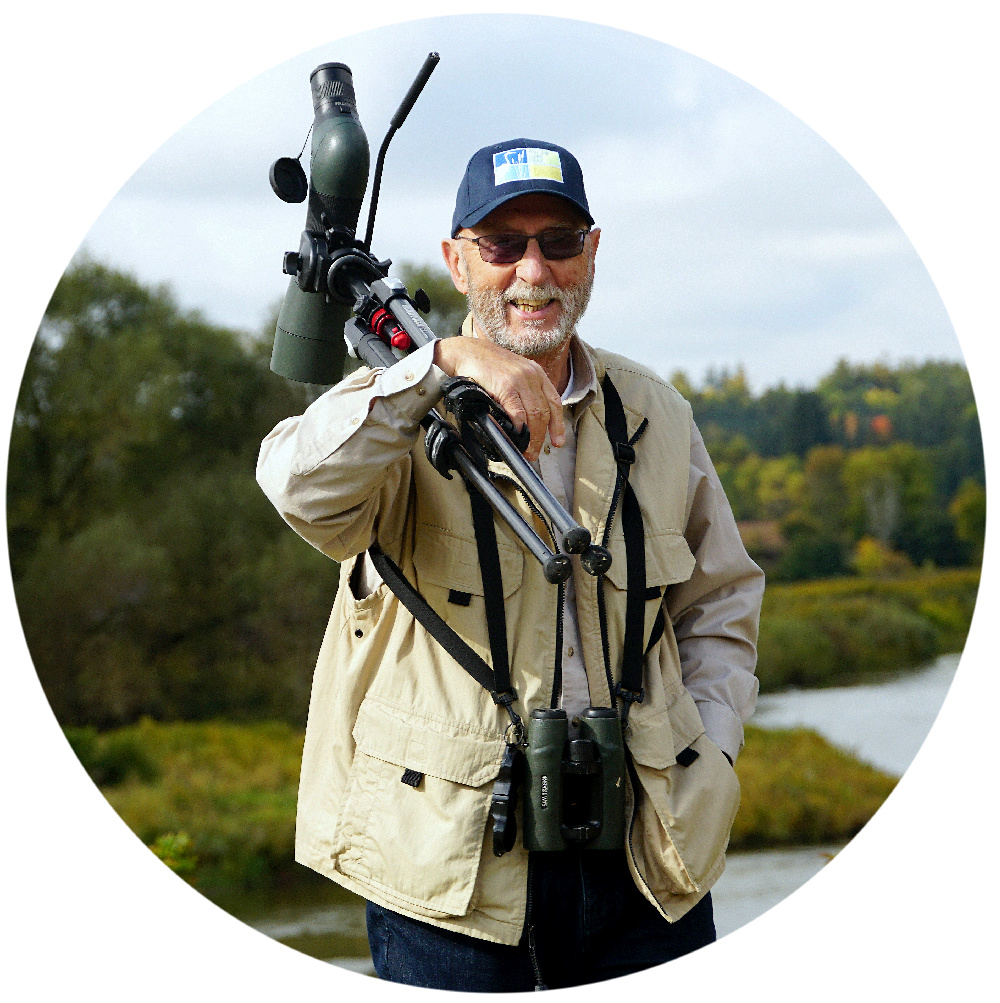I am a fundamentally curious person, and it's never hard finding subjects of interest; the challenge lies in narrowing them down.
Thor Hanson
01 June, 2025
Grass Lake, Cambridge, ON
In spring the Grass Lake area is awash with wildflowers and this year the bounty seemed especially prolific.
This is a species of flax (genus Linum) I believe.
Mouse-ear Hawkweeds (genus Pilosella) are tenacious and tolerate the vicissitudes of our climate extremely well.
Oxeye Daisy (Leucanthemum vulgare) is equally hardy and thrives in a wide range of soil, even in abandoned areas.
This fly is in the genus Delia; individual species are very difficult to identify for the non-specialist.
One of the farms was hosting an equestrian show and there was a constant stream of riders (almost all women) going up and down the road.
The equine parade added an element of charm to the morning, and almost without exception the riders greeted us with a cheery wave and words of greeting.
One always wishes when visiting Grass Lake to catch a glimpse of Sandhill Cranes (Antigone canadensis). For many years they have bred in the area, but they can be an elusive quarry and a chance encounter remains a special treat.
We were very fortunate to see a pair with two colts.
They were far off and our pictures are not the best, but the sighting of a family group was memorable indeed.
Savannah Sparrow (Passerculus sandwichensis) is a common bird, but they seem to have a special zest for life at Grass Lake and are often seen trilling as though to celebrate the day.
On the way over to FWR Dickson Wilderness Area we passed many Midland Painted Turtles (Chrysemis picta marginata) hauled out on suitable resting places, enjoying the warm rays of the sun.
Someone left a comment on a recent post indicating that turtles are not present where they live, and that seemed quite sad, somehow.
FWR Wilderness Area, Cambridge, ON
Dame's Rocket (Hesperis matronalis) is ubiquitous.
The glowing countenance of Meadow Buttercup (Ranunculus acris) seems the very invitation to children's games.
These insects seem to be primarily European in distribution, but given the ease with which alien species are introduced into North America, it appears to have become established here. I have posted images to iNaturalist but so far my ID has been neither confirmed nor refuted.
Northern Azure (Celastrina lucia) is a piece of cake by comparison.
Common Ringlet (Coenonympha tullia) has a "hairy" look to it, perhaps suited to its original northern distribution.
Bitter Wintercress (Barbarea vulgaris)
Common Mouse-ear Chickweed (Cerastium fontanum)
Bot Flies, Blow Flies, and Allies (superfamily Oestroidea)
A Bronze Jumping Spider (Eris militaris) is a handsome species, extremely beneficial to farmers as it consumes many insects harmful to crops.
Sadly our obsession with pesticides, ever more noxious, as one product after another is rendered ineffective, has a detrimental affect on these organisms, depriving agriculture of the benefits nature provides - at no charge, too.
A Western Honeybee (Apis mellifera) plied its trade.
Autumn Olive (Elaeagnus umbellata) was wearing its elegant spring coat - the same one as last year, but always in fashion.
As expected, Northern Cardinals (Cardinalis cardinalis) were checking whether we had brought seed, and followed us as we ambled along the boardwalk.
A handsome male Red-winged Blackbird (Ageleius phoeniceus) might well have been dressed by a bespoke tailor of distinction!
I was delighted to find Common Bracken (Pteridium aquilinum) growing quite prolifically where conditions were suitable.
We made a very brief stop at Bannister Lake on the way home, merely pulling off to the side of the road to scan the water.
Water-lilies (family Nymphaeaceae) were abundant and covered a good portion of the lake.
Whatever the species, they were very beautiful.
A Great Blue Heron (Ardea herodias) sailed across the water on giant wings and set about the serious business of finding food.
A Killdeer (Charadrius vociferus) was content to probe along the interface of grass and the shoulder of the road.



































































Hari OM
ReplyDeleteSuch delicacy, such colour, such romance... Nature has it all and you captured a lot of it for us today! YAM xx
Fauna and flora at their best. With a precious highlight on our feathered friends. It is worth leaving the house to enjoy days like this.
ReplyDeleteBest wishes,
JR
...the Eastern Meadowlark was making its presence know, I love it.
ReplyDeleteAbsolutely stunning and refreshing series of captures, David! I love the colours and details.
ReplyDeleteBeautiful series of life and nature.. I would love to have been one of those women on horseback!
ReplyDeleteLas especies animales bien fotografiadas a través de esas buenas fotos.
ReplyDeleteFeliz fin de semana.
my favorite photo today is the hooves of those magnificent horses. a very close 2nd is the dot tail. wow, what a beauty and the photo makes it feel like I could touch it and hold it. 3rd is the killdeer.. every single photo is gorgeous and I do have a fondness for wild flowers and these are amazing. I have been know to say I have a curiosity bump the size of the empire state building.. my curious is different than you curious but still the same.
ReplyDeleteThe important thing is to have an active, lifelong curiosity, wherever it takes you.
DeleteI do love walking with you. Thank you.
ReplyDeleteNo turtles here - which is DEFINITELY sad.
Well, at least you have cockatoos.
DeleteI enjoy looking at your amazing photos and reading your witty narration. Since I know very little about identifying birds and flowers, I am in awe ! That bright red cardinal really is an eye catcher and I've never seen the Tufted Titmouse before. Thanks.
ReplyDeleteHave you been out to the Gaspe Peninsula? We are headed that way very soon. Any recommendations?
ReplyDeleteDo not fail to visit the enormous breeding colony of Common Gannets on Ile Bonaventure, one of the great wonders of the natural world. I have visited it twice and would go back in a heartbeat. Too bad I couldn’t meet you there to act as guide and interpreter!
DeleteI'll will look for that. thanks.
DeleteThere will be several locations in Percé selling ticket for the ferry over to the island, a very enjoyable crossing.
DeleteThe Meadowlark really has something to say!
ReplyDeleteReally wonderful photos. I love the turtles. I just got off the phone with my Son, he told me his wife has an app that listens to the birds and tells you what they are. They are having a lot of fun with it. Again beautiful photos. Have a great weekend.
ReplyDeleteThe app called Merlin is probably what they are using.
DeleteThose wild flowers are so beautiful and that Northern Cardinal is so handsome. Thank you for taking us along, David.
ReplyDeleteHello David,
ReplyDeleteYou've once again brilliantly compiled the beauty of the flora and fauna. Great post with great information.
Regards, Frank
I take note of the CAUTION RADIO FREQUENCY right by that Eastern Meadowlark.
ReplyDeleteThere are many communications towers in the Grass Lake area.
DeleteThanks for taking us along on a beautiful natures journey... Love Northern Cardinal :)
ReplyDeleteWhat a great series of photos of your walk David.
ReplyDeleteThe Northern Cardinals are my favorite this time.
I wish you a nice weekend.
Greetings Irma
It’s obvious, David, that you had a perfect weather day for these explorations, the first series of wildflower photos were very familiar to me. We also had them in VA and many in our yard as well as we decided to plant a wildflower garden from volunteers.
ReplyDeleteWildflower gardens are the best kind. I bet it was spectacular and attracted myriad insect pollinator insects and hummingbirds.
DeleteMooi gevarieerd blog David.
ReplyDeleteMooi om de wilde bloemen te zien.
Maar nog mooier zijn de kraanvogels, die wil ik ook wel voor de lens ;-))
Groetjes Tinie
Lovely flowers !!! Birds and wildlife...You have a eye (or zoom ;) ) to find little beauties hide in the grass...
ReplyDeleteHave a shinny weekend !
Bisous
Anna
Wonderful photos David once again. I do love the spider :-D And I am against pesticides. There are so many natural ones, spiders as mentions and my good friends the wasps. They do have a detrimental effect on so much in nature and I wonder how much trouble they are causing humans too. Yet they are allowed to use them?? Crazy world isn't it!
ReplyDeleteHallo David,
ReplyDeleteBehalve heel veel mooie planten en bloemen zag je ook veel bijzondere insecten. Ik vind die spin met z'n vele ogen erg mooi en daarnaast heb je ook nog veel prachtige, voor Canada inheemse vogels gefotografeerd. Die rode kardinaal is prachtig, hier soms gehouden als volièrevogel en vooral die roodvleugelmerel. Als die hier zou opduiken tussen onze inheemse merels dan liep heel vogelminnend Nederland daarvoor uit.
Groeten,
Ad
If ever you make it to southern Ontario, Ad, I'll be happy to help you find these birds - and maybe even a spider or two!
DeleteGreat photos that are always a pleasure to look at. However, the one that caught my attention the most was that spider. Great eyes.
ReplyDeleteWonderful photos, as always. I really enjoyed seeing the wide variety of flowers and the sandhill cranes were a treat.
ReplyDeleteI'm not at home this weekend David, so I have not been able to read your blogpost until now. I'm sitting in my hotelroom right now and read blogs :)
ReplyDeleteI love too see all the beautiful flowers and birds in your area. It's difficult to have a favorite, but it must be the beautiful horses.
Hugs and kisses, Marit
An amazing collection of colourful treasures of nature! You have also provided interesting information with the photos.
ReplyDeleteGreat pictures as usual and thank you for sharing them. I especially loved the Sandhill family.
ReplyDeleteThe Northern Cardinals are wonderful, but I enjoyed all of the photographs you've shared here, thank you.
ReplyDeleteAll the best Jan
To na pewno był wspaniały dzień. Każdy podobny należy do wspaniałych. Wędrówka poprzez łąki, rezerwaty jest pełna odkryć i zaskoczeń. Ja też chętnie zatrzymuję się nad każdym kwiatem i choć widziałam go tysiąc razy, wydaje się atrakcyjny. I też chce wiedzieć o nim wszystko. Pozdrowienia!
ReplyDeleteCuriosity is the mark of a good naturalist, Ludmila.
DeleteWhat a delightful journey through Grass Lake and the F.W.R. Dickson Wilderness Area. Your keen eye for both the vibrant wildflowers and the diverse birdlife brings the landscape vividly to life. The sighting of the Sandhill Crane family is truly special, and the parade of horses adds an extra touch of charm to the day. Thank you for sharing these moments of natural beauty and curiosity. It's a pleasure to wander along through your words and photos. I really love the owl photo in the header. It’s captivating and adds such a charming touch to the whole page.
ReplyDeleteGreat day indeed! David, love your posts so much. Such beauty and diversity. That quote at the top....bang on. Thank you.
ReplyDeleteMany birds, and turtles are the queens of sun exposure.
ReplyDeleteHello David, this looks like a wonderful place in nature to vissit. The flowers, insects birds and than specialy the Sandhill cranes with young is a highlight indeed.
ReplyDeleteMost wonderful.
Warm regards,
Roos
Wow, such an abundance of beautiful wildflowers and animals... I especially like the chickadee and the cardinal, which we don't have here. The horses with the tufts on their fetlocks are cold-blooded... here they are the black Friesians. You had a wonderful trip. Thanks for the pictures ...
ReplyDeleteRosi.
I enjoy the pictures of the flowers as much as the birds. Some of those sandhill cranes winter over down here in Texas.
ReplyDeleteBest of all, of course, are the Whooping Cranes that spend the winter at the Aransas National Wildlife Refuge.
DeleteWonderful photos and so many beautiful birds, so well captured!
ReplyDeleteHorses, turtles, beautiful birds and flowers. It doesn't get better than that:)
ReplyDeleteWhat an amazing variety of nature! I especially enjoyed seeing the horses. We relocated from ranch country OK to farm country IL. Miss seeing the horses. Thank you for sharing.
ReplyDeleteEven the horses there look more beautiful and carefree than the ones I see around here. Thanks for the glorious images.
ReplyDeleteBe well, David.
Mother Nature in all her glory. The horses are wonderful and particularly enjoyed the one of the hooves in motion
ReplyDeleteHello David
ReplyDeleteHow many interesting things can you spot in a meadow, and I'll tell you that I felt like I was in my own meadow, because many of these wildflowers also grow in my area. Lovely photos, you spent a lot of time and it was worth it, there's a lot to see and personally I like to admire nature and wildlife the most. Whenever I have time I walk and enjoy what I can find in the grass, you just have to look for it skillfully...
Good luck and have a nice summer day, best regards.
Maravilloso este paseo y gracias por mostrarnos tantas flores y aves. Has hecho unas fotos increíbles y el "cardenal norteño" es de una gran belleza, me encantó volverlo a ver en tu blog que es donde lo conocí.
ReplyDeleteMuchos besos.
I somehow missed this post in life's busi-ness. Those sandhill cranes are amazing.You are lucky to have them in your area. I saw a big flock flying north once when I was in New Mexico and mostly more than seeing you could hear them. And all those wildflowers are beautiful, as well as the birds. Yesterday I saw 2 kingfishers hanging out together. I'm not sure if it was a parent with a youth or an adult pair, but they are always fun to see and listen to also. Have a wonderful day. Hope it's not too hot.
ReplyDeleteHi David,
ReplyDeleteI enjoyed very much 'walking with you' through the overwhelming amount of nature at your side. Love all the different species you show.
Best regards, Corrie
David!
ReplyDeleteEvery photo of flora and fauna is stunning. I love your blog because you show us wonderful plants, nature and wonderful birds.
Greetings
Amazing how we have similar flowers. I have never seen flax before, but this year I had some seeds given to me and they are so pretty. I gather it is wild in your neck of the woods, but not so here. As always great photos and comments of interest. Bisous, Diane
ReplyDeleteSiempre es un placer pasear contigo y Miriam. Todas esas flores silvestres viven por mi zona, me encantan, aunque los pájaros no y me gustaría tenerlos también aquí. Te dejo muchos abrazos y besos, reparte con Miriam.
ReplyDeleteHi David – what lovely pics … the horse riders must have been fun to be out and about with … but that Eastern Meadowlark has a 'huge' mouth … extraordinary pic – love it … and yes, it looks like a great day out – happy times … beautiful photos – cheers Hilary
ReplyDelete